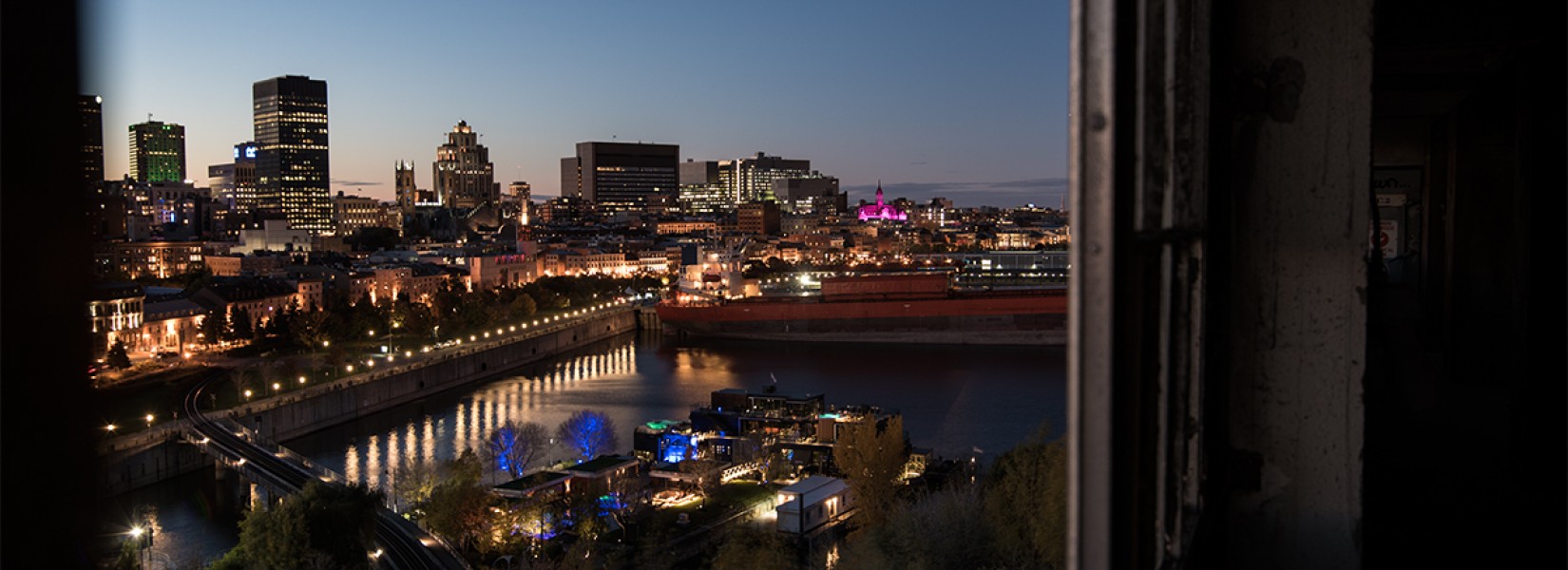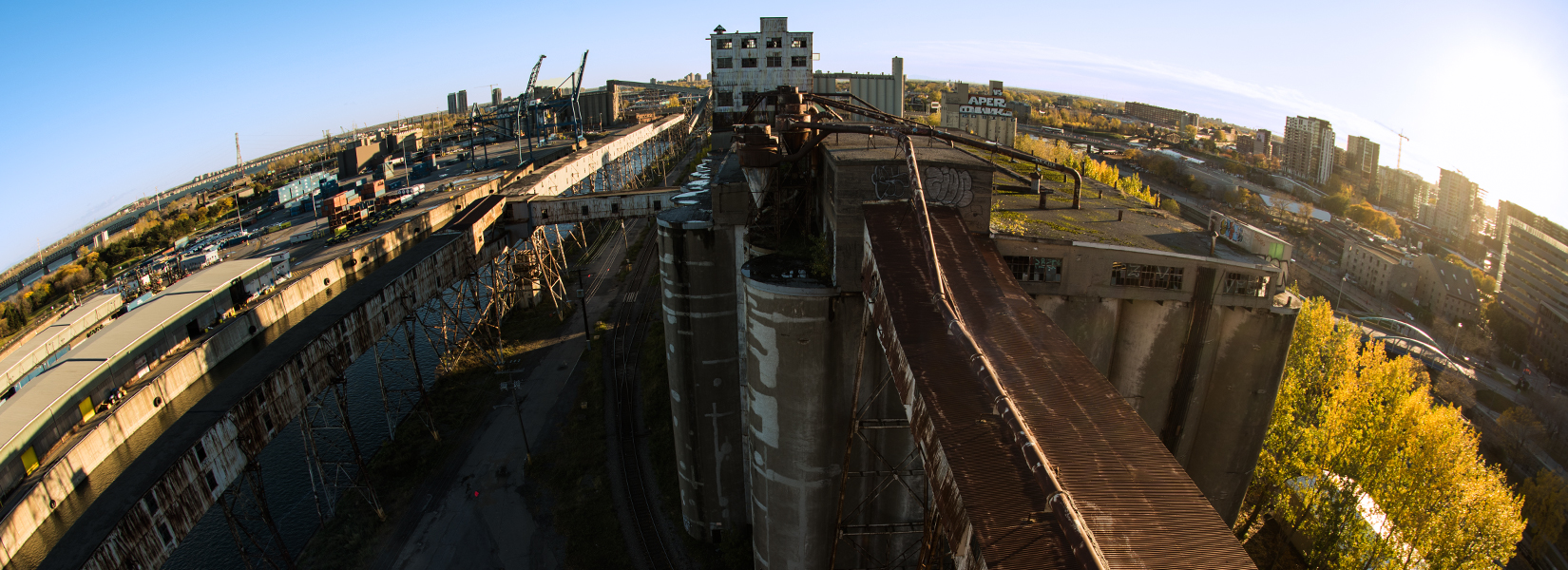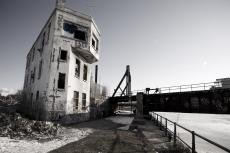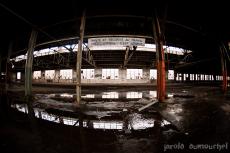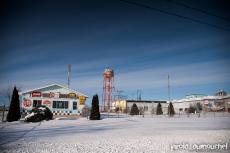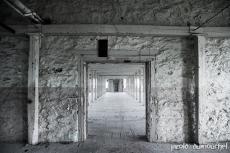Built in 1930, the Wellington tower has ceased operations in 2000. Despite the years that have passed and graffiti artists who came to express their art, the structure of the old tower is still ok. When it was in operation, that's where that were...
The Silo #5
Emblematic industrial monument in the Old Port of Montreal
A true emblem of the Old Port of Montreal, it is difficult to miss the Silo # 5, a gigantic concrete structure south of McGill Street. The complex consists of 206 silos and an amalgam of buildings built over a period of more than fifty years, measuring half a kilometer and 66 meters (218 feet) high.
Located at the entrance to the Lachine Canal, the Silo #5 is located on the jetty of Pointe-du-Moulin-à-vent, created from embankments taken from the construction of the canal. It was in 1906 that Silo # 5, formerly known as Elevator B, came into operation. Designed with brick and non-combustible materials to avoid the risk of explosions of grain dust, a first annex was added in 1913 and expanded in 1923 and 1924. More than 60 circular silos were used to store grain from all over the country but mainly from western Canada. Known as a hub of the grain trade in North America and the main cereal port, the (old) port of Montreal is in full boiling. The railway and the Lachine Canal are the link in this economy, which allows the precious cereal to be exported to Europe.
Between 1957 and 1959, a third building will be built in the extension of the existing silo. Notably, the few upper floors that will be added will be the rare glazed sections of the gigantic complex. It is also this part that is visible when one is on the street of the Commune.
Disused since 1994, the site is today plagued by vandalism and graffiti artists who come to perfect their art. Patrolled by several teams of guards, it is not uncommon to see hordes of teenagers fleeing the scene like frightened deer when the authorities find them.
What's next for Silo # 5
The silo # 2, formerly located in front of the Bonsecours market, 15 storeys high and the highest point in Montreal when it was built in 1910, was destroyed in 1978 to provide Montreal a better access to the river. Other imposing structures have also been destroyed or redeveloped in order to make the transition from the industrial past of the Old Port to a tourism future of the sector.
On his side, the old Silo #5 remains isolated between the port sector still in operation and the tourism sector in full boiling. Numerous projects have been purposed out to redevelop the complex, but none of them has succeeded. From the hotel to the data center, through museums and its demolition, more than a hundred projects have been proposed. Lately, in the La Presse newspaper, it was proposed that the principle of the High Line Trail of New York (trail on a former elevated railway) be reintroduced to offer visitors a view of Montreal from the top of the elevators.
The idea is certainly interesting, but it remains to be seen the welcome that will be made by the Société Immobilière du Canada, responsible for developing and rehabilitating the sector by 2025.
Other silo processing projects around the world
The problem of industrial and decommissioned silos is not unique to Montreal. Several cities around the world have used originality to give a new start to formerly industrial sectors and today, revitalized. The example of Akron in Ohio is interesting. The complex of fifty silos has been transformed into a hotel.
In Copenhagen, two former silos have also been converted into a residential complex, part of a program to revitalize the Brygge Islands, opposite the capital of Denmark.

Photo: Bob Collowan/Commons/CC-BY-SA-4.0
Related content
Victim of the globalization of markets, the history of Stelfil Ltd. has suddenly stopped on March 28, 2008 for the factory and its hundred employees. The company has been decorated in 2002 in the Great manufacturing company category by the...
The place is big, very big. While the building is nearly 200,000 square feet, the site, meanwhile, is over than 430,000 square feet in an agricultural area of Saint-Jean-sur-Richelieu. For those interested, the site is for sale and the current...
This is the result of a combination of circumstances which led the Stanley Tools company to settle in the region rather than elsewhere in Canada. In 1858, a man known as Sem Dalpe decided to settle in Roxton Pond because there was a strong...

